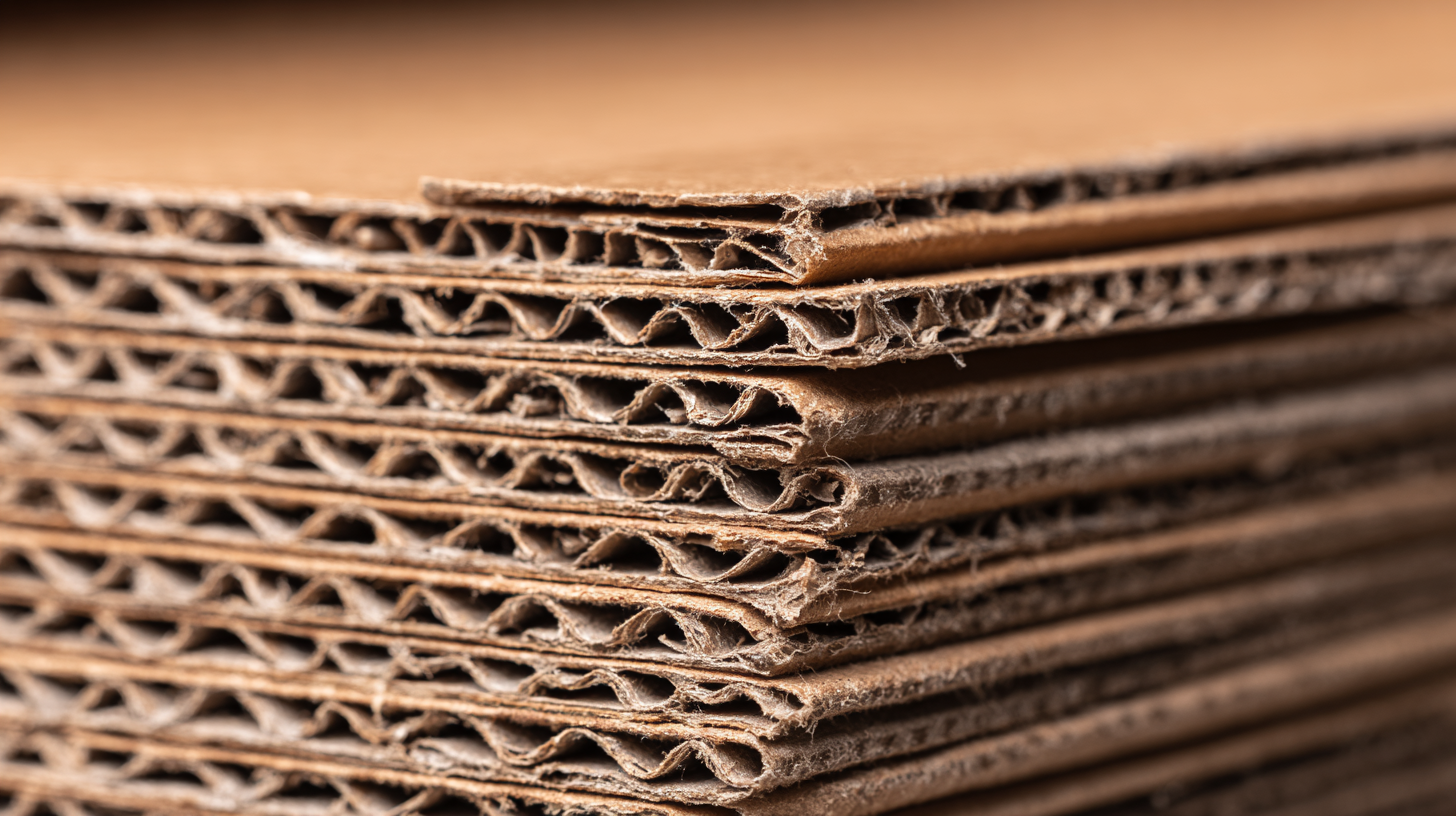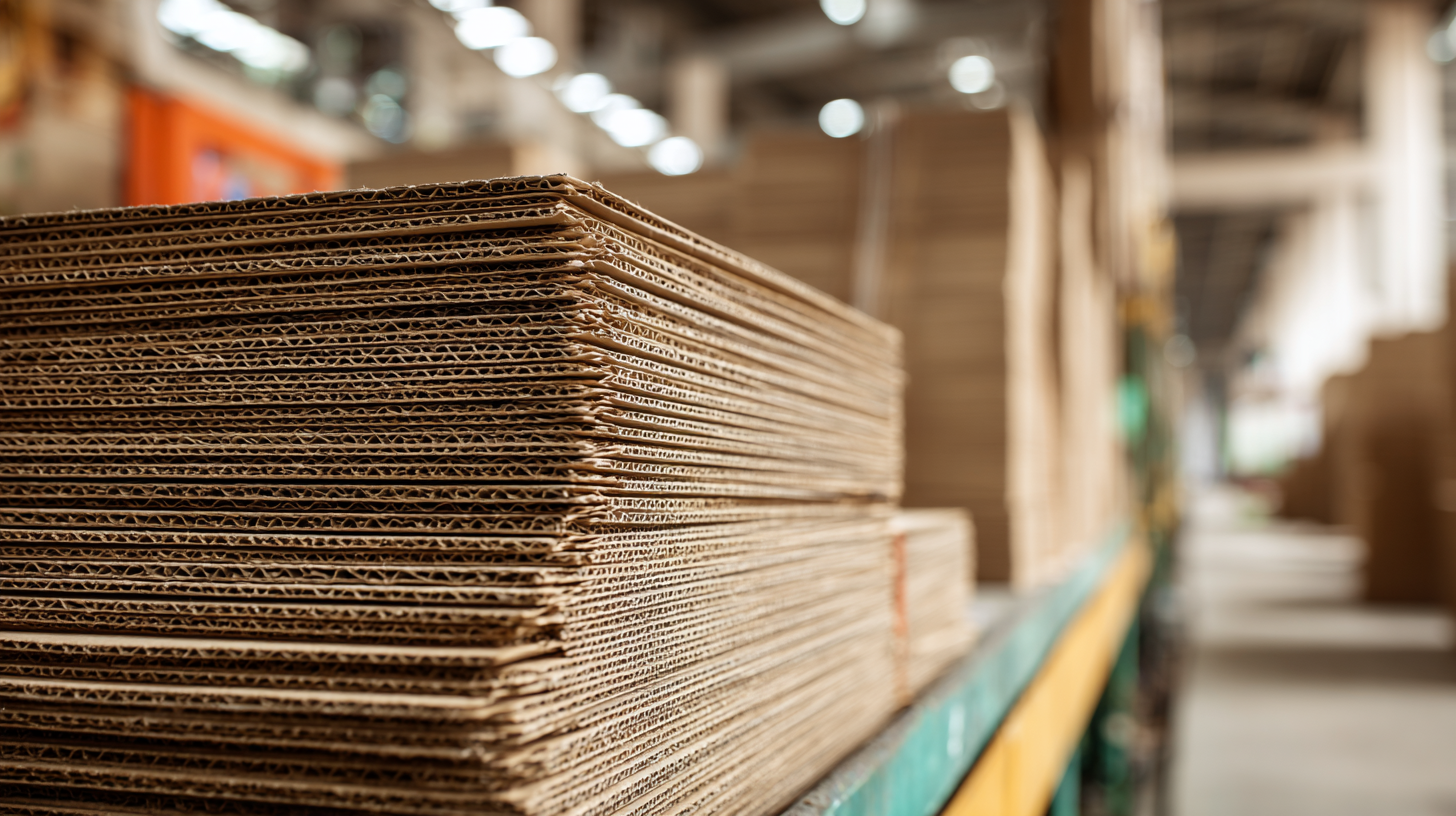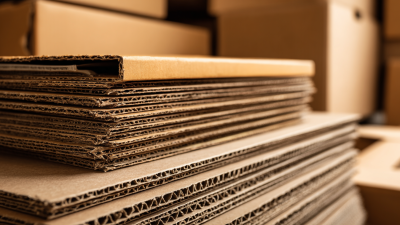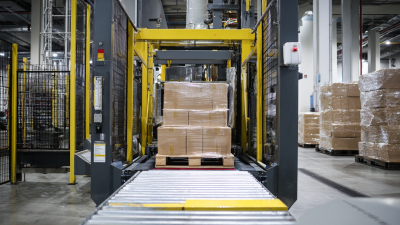7 Best Practices to Optimize Your Usage of Corrugated Cardboard for Packing Solutions
In today's fast-paced world, efficient packing solutions are vital for businesses aiming to reduce costs and enhance sustainability. One of the most versatile and widely used materials in packaging is corrugated cardboard. Known for its lightweight design, durability, and eco-friendliness,
 corrugated cardboard not only protects products during transit but also reduces the environmental footprint of packaging operations. However, to fully capitalize on the benefits of this material, it is essential to adopt best practices that optimize its usage. In this blog, we will explore seven key strategies that can help businesses improve their packing processes with corrugated cardboard, ensuring that they achieve both efficiency and sustainability while maintaining product safety during transportation.
corrugated cardboard not only protects products during transit but also reduces the environmental footprint of packaging operations. However, to fully capitalize on the benefits of this material, it is essential to adopt best practices that optimize its usage. In this blog, we will explore seven key strategies that can help businesses improve their packing processes with corrugated cardboard, ensuring that they achieve both efficiency and sustainability while maintaining product safety during transportation.
Best Practice #1: Understand the Environmental Impact of Corrugated Cardboard Recycling Rates at 89%
When considering the use of corrugated cardboard for packing solutions, it’s essential to understand its environmental impact, particularly when it boasts a recycling rate of 89%. This impressive statistic not only highlights the material's sustainability but also encourages businesses to adopt eco-friendly practices. By opting for recycled cardboard, companies can significantly reduce their carbon footprint and contribute positively to the circular economy. The high recycling rate indicates a robust infrastructure for collecting and processing used cardboard, reinforcing its role as a leading choice for environmentally-conscious packaging.
Moreover, the environmental benefits of using corrugated cardboard extend beyond just recycling. Its lightweight nature reduces transportation emissions, while its biodegradable properties ensure it decomposes naturally when disposed of properly. As businesses strive to meet sustainability goals, understanding these factors can influence their packaging decisions. By embracing corrugated cardboard, companies can not only enhance their operational efficiency but also resonate with consumers who prioritize eco-friendliness in their purchasing decisions. Adopting best practices in utilizing this versatile material helps pave the way for a greener future.

Best Practice #2: Optimize Your Packaging Design to Reduce Material Waste by Up to 20%
In the pursuit of sustainable packaging solutions, optimizing packaging design is crucial, particularly when it comes to corrugated cardboard. By refining your design, it is possible to reduce material waste by up to 20%. This not only benefits the environment but also lowers costs associated with raw materials and transportation. A report from the Paper and Packaging Board indicates that businesses can save significant amounts—up to $24 million annually—by implementing efficient design practices. Such savings stem from the reduced need for excess materials and fewer resources required for shipping lighter, more efficiently packed products.
Moreover, adopting a design-focused approach allows organizations to use sophisticated software tools that simulate packaging performance while minimizing waste. According to the Efficient Natural Resources Management report, companies that utilize these tools report a 15% increase in overall packaging efficiency. Therefore, by prioritizing thoughtful packaging design, businesses not only align with sustainability goals but also enhance their operational efficiency, thereby creating a win-win scenario for both the environment and their bottom line.
Optimizing Packaging Design to Reduce Material Waste
Best Practice #3: Leverage the Strength-to-Weight Ratio of Corrugated Cardboard to Save on Shipping Costs by 30%
Corrugated cardboard is renowned for its excellent strength-to-weight ratio, making it a top choice for packing solutions. By understanding and leveraging this unique characteristic, businesses can significantly reduce their shipping costs. When products are packed in lightweight yet sturdy corrugated boxes, the overall weight of shipments decreases, leading to lower freight charges. This is particularly beneficial for companies that frequently send large quantities of goods, as even a small reduction in weight can result in substantial savings.
In addition to cost savings, utilizing corrugated cardboard for packaging can enhance product protection. The structural integrity of corrugated materials provides a cushion that prevents damage during transit. This not only minimizes the risk of returns and replacements due to shipping mishaps but also reinforces customer satisfaction. By strategically selecting the right size and strength of corrugated boxes, companies can optimize their packing processes, ensuring that they meet weight restrictions while adequately safeguarding their products. This balance of efficiency and protection is key to maximizing the benefits of using corrugated cardboard in shipping operations.
Best Practice #4: Utilize Custom Sizing Techniques to Enhance Product Protection and Reduce Returns by 15%
In the ecommerce landscape, the return rate has become a critical metric, often averaging around 20-30%. For retailers, this not only impacts sales forecasting but also strains profit margins. Implementing custom sizing techniques for corrugated cardboard packing can significantly mitigate these challenges. By tailoring packaging to fit products precisely, you can enhance protection during transit, reducing damage and the subsequent need for returns. Studies indicate that retailers utilizing optimized packaging can see a return reduction of up to 15%, showcasing a direct correlation between effective packing solutions and improved financial performance.
Moreover, custom-sized packaging addresses the growing consumer demand for sustainability. As customers become more environmentally conscious, reducing the amount of excess packaging can foster customer loyalty and satisfaction. In fact, a recent report highlights that 70% of consumers are more likely to shop from brands that utilize eco-friendly packaging. By adopting best practices such as utilizing custom cardboard sizes, businesses not only improve product protection but also align with consumer preferences, ultimately driving sales while minimizing return rates.
7 Best Practices to Optimize Your Usage of Corrugated Cardboard for Packing Solutions
| Custom Sizing Technique | Product Protection Enhancement (%) | Reduction in Returns (%) | Cost Savings ($) |
|---|---|---|---|
| Tailored Box Dimensions | 25% | 15% | $3000 |
| Reinforced Corners | 30% | 10% | $2500 |
| Custom Inserts | 35% | 20% | $4000 |
| Effective Sleeve Design | 28% | 12% | $2800 |
Best Practice #5: Invest in Automation for Packing Processes to Improve Efficiency by 25% and Reduce Labor Costs
Investing in automation for packing processes represents a significant leap forward for businesses looking to enhance efficiency and reduce labor costs. With the increasing demand for streamlined operations, automated packing systems can boost productivity by up to 25%. These technologies minimize human error, ensuring consistent quality in packaging while also speeding up the overall process. By integrating automated solutions into your packing line, you can achieve faster turnaround times and higher throughput, addressing the needs of a rapidly changing market.
 Furthermore, automation allows for better allocation of human resources. When repetitive tasks are handled by machines, employees can focus on more value-added activities, such as quality control and client interactions. This shift not only improves job satisfaction for workers but also contributes to a more scalable operation. As labor costs continue to rise, investing in automation not only mitigates these expenses but also positions your business for long-term growth and competitiveness in the packaging industry.
Furthermore, automation allows for better allocation of human resources. When repetitive tasks are handled by machines, employees can focus on more value-added activities, such as quality control and client interactions. This shift not only improves job satisfaction for workers but also contributes to a more scalable operation. As labor costs continue to rise, investing in automation not only mitigates these expenses but also positions your business for long-term growth and competitiveness in the packaging industry.



